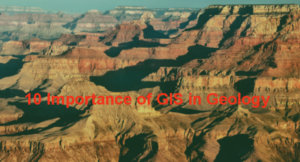GIS has been applied in asset management in a variety of ways. Currently, it is possible to analyze the value of an asset thanks to the availability of GIS. Below are some of the applications of GIS in asset management.
Market Share – Examining branch locations, competitor locations and demographic characteristics to identify areas worthy of expansion or determine market share in Maptitude. Investors can be able to analyze the available market share and figure out the potentiality of a given market using GIS.
ATM Machine – Filling in market and service gaps by understanding where customers, facilities, and competitors are with address locating, database management and query tools. Through the use of GIS, banks are able to make good use pf their assets and resources through mapping out the various locations where an ATM should be put up.
World Bank Economic Statistics – Slicing and dicing raw financial data from the World Bank. It is now a bit easier to make sense of the available data from the World Bank and other economic lenders and determine the viability of some of the investment decisions that need to come from these areas.
Merger and Acquisitions – Profiling and finding opportunities to gain and build where customers are with market profiling. Many mergers and acquisitions occur globally and investors could make use of information provided by GIS to be able to identify what mergers would be profitable and which ones will not.
Supply and Demand – Identifying under-served areas and analyzing your competitor’s market. It is also a bit easier, thanks to GIS, to analyze the market dynamics of demand and supply and identify areas where demand is diminishing and where supply may be increasing.
Community Reinvestment Act (CRA) – Fulfilling the obligations to loan in areas with particular attention to low- and moderate-income households – using GIS to understand spatial demographics.
Mobile Banking – Capturing locations where existing mobile transaction occur and assisting in mobile security infrastructure. GIS can also help in identifying the areas where mobile transactions occur and mapping out accordingly in order to plan for these.
Commercial Establishments – Updating commercial establishment using gvSIG Mobile and a local databases. It is also easier than ever to update various commercial establishments using GIS.
Supply Chain – Finding which supply chains are vulnerable to better plan for interruptions. GIS is also an asset to supply chains because it helps in identifying the areas where the chains are suppressed and then important decisions can be made regarding the survival of these chains.
Integrated Freight Network Model – Integrating highly detailed information about shipping costs, transfer costs, traffic volumes and network interconnectivity properties in a GIS-based platform.



